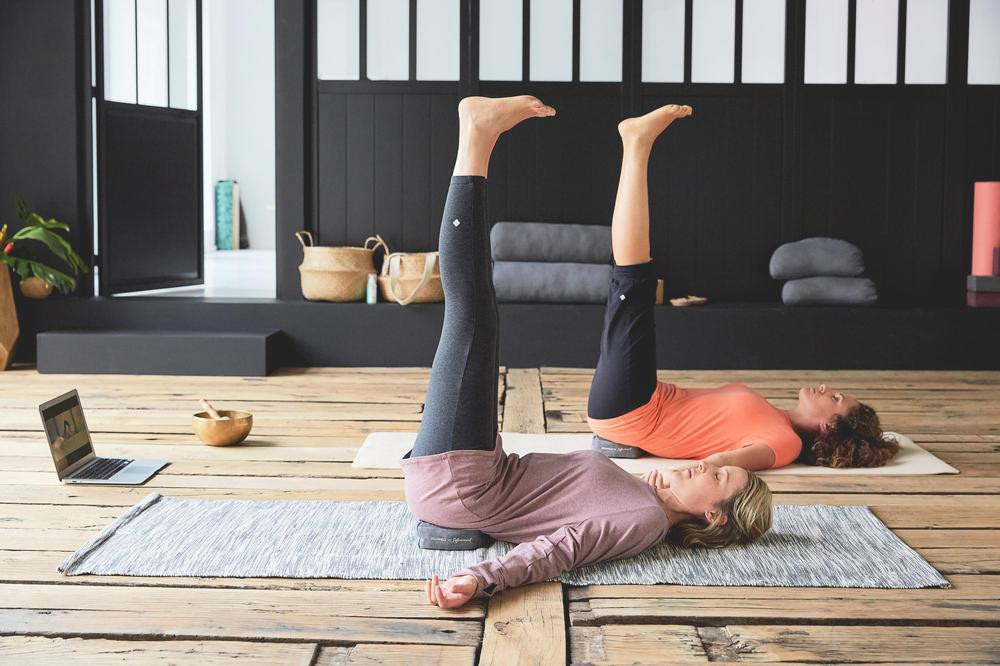Sick Tattoo: Expressing Artistry, Identity, and Personal Growth Through Body Ink
Tattoos have come a long way from their ancient roots, evolving into one of the most popular and revered forms of personal expression in modern times. For centuries, body ink has been used to tell stories, convey spiritual beliefs, and display allegiance. In contemporary culture, tattoos serve as both a fashion statement and a deeply personal form of self-expression. From minimalist designs to full-body art, tattoos allow individuals to express who they are, what they believe, and what they have experienced. For many, a tattoo is more than just ink on the skin—it’s a testament to their journey, an outward symbol of inner growth, or even a tribute to loved ones.
In this post, we will explore the various aspects of tattoos: their rich history, the modern tattoo culture, how to choose the right tattoo, the tattooing process, and why tattoos hold such deep significance for so many people. Whether you're thinking of getting your first tattoo or adding to your collection, there’s a lot to consider when embarking on the journey of body art. Let’s dive in.
A Brief History of Tattoos: From Ancient Rituals to Modern Art
The practice of tattooing is as old as civilization itself. Archaeologists have discovered tattooed remains that date back to 3300 BCE, such as the famous "Iceman" found in the Alps. These early tattoos were often simple dots and lines but held deep meaning for the people who wore them. In ancient societies, tattoos were used for various reasons, including religious rituals, rites of passage, healing practices, and as marks of status within a community.
For instance, Polynesian tribes are known for their intricate and highly symbolic tattooing traditions, where specific patterns and designs denote rank, genealogy, and achievements. Meanwhile, in Japan, tattoos (Irezumi) have a long-standing association with spirituality and folklore, although at times they were also linked to criminality and punishment. Similarly, ancient Egyptians adorned their bodies with tattoos as part of religious practices or as a form of protection. In Native American cultures, tattoos were also commonly used to signify bravery in battle, spiritual journeys, or family heritage.
Fast forward to the modern era, and tattoos began to take on new meanings. In the 18th and 19th centuries, sailors were some of the earliest adopters of tattoos in the Western world, often marking themselves with nautical symbols to signify their life at sea. By the 20th century, tattoos became increasingly associated with subcultures, including bikers, punks, and rock stars. However, over the last few decades, tattoos have moved from being countercultural to mainstream, embraced by people from all walks of life.
Modern Tattoo Culture: A Canvas for Self-Expression
The rise of tattoos in mainstream culture has been nothing short of phenomenal. Today, they are no longer seen as a fringe practice but a celebrated form of self-expression. The shift in perception can be attributed to the growing recognition of tattoos as a legitimate art form, fueled by advancements in tattoo techniques, tools, and inks. In fact, many tattoo artists are now regarded as fine artists, with their work being exhibited in galleries and art shows around the world.
A tattoo can be as simple or complex as you want it to be. From intricate sleeves that cover an entire arm to minimalist designs such as a small, delicate symbol on the wrist, the possibilities are endless. People choose tattoos for a variety of reasons: some to commemorate a special event or person in their life, others to express their beliefs or identity. For many, their tattoos are part of a larger narrative, each piece of ink telling a different chapter of their life story.
The diversity of tattoo styles today is astounding. You can find anything from traditional styles like American and Japanese tattoos, characterized by bold lines and iconic imagery, to hyper-realistic portraits, geometric patterns, watercolor designs, and abstract art. This diversity reflects the fact that tattoos have become more personalized, with each design being unique to the individual wearing it.
Finding Inspiration: How to Choose Your Perfect Tattoo
One of the most exciting yet challenging parts of getting a tattoo is deciding on the design. Tattoos are permanent, so it's essential to choose something that holds meaning for you. Some people spend months, even years, deciding on the perfect tattoo. Others may know exactly what they want from the moment they decide to get inked.
A great starting point for inspiration is to think about your personal experiences, values, and passions. What do you want your tattoo to represent? Are you honoring a loved one, marking an important milestone, or simply getting something that you find beautiful? Popular tattoo themes include animals, nature, symbols, quotes, and spiritual imagery. Some people also look to their heritage or culture for inspiration, choosing designs that connect them to their roots.
It’s also important to research tattoo artists and their portfolios to find someone who specializes in the style you’re interested in. Every tattoo artist has their own distinct style, so finding the right artist for your vision is key to ensuring you’re happy with the final result. Many tattoo artists welcome consultations, where you can discuss your ideas and get feedback on design, placement, and size.
The Tattooing Process: What to Expect
Once you've chosen your design and your tattoo artist, it’s time for the tattooing process itself. For first-timers, the idea of getting a tattoo can be nerve-wracking, especially because of the needlework involved. However, knowing what to expect can ease some of that anxiety.
Before the tattooing begins, the artist will clean the area of skin to be tattooed, then stencil the design onto your skin to ensure correct placement. After you approve the placement, the tattoo machine—a device that rapidly moves the needle up and down—injects ink into the dermis layer of the skin. Depending on the complexity of your design, a tattoo session can last anywhere from 30 minutes to several hours, and in some cases, you may need multiple sessions to complete a larger piece.
The pain of getting a tattoo varies depending on the location on your body and your personal pain tolerance. Some areas, like the ribs, hands, or feet, tend to be more sensitive, while others, like the upper arm or calf, are less painful. It’s important to listen to your body during the process. Most tattoo artists will offer breaks if needed, especially during longer sessions.
Aftercare: Preserving Your Body Art
Taking care of your tattoo after it’s been completed is crucial to ensuring it heals properly and looks its best. Right after your tattoo session, the artist will typically cover the area with a bandage or plastic wrap to protect it from bacteria. Over the next few days, you’ll need to keep the area clean, gently washing it with soap and water and applying a thin layer of moisturizing ointment. Avoid exposing your fresh tattoo to direct sunlight, and resist the urge to pick at any scabs that form, as this could cause the tattoo to fade or scar.
It typically takes 2-3 weeks for a tattoo to heal fully, although it may take longer for larger pieces. Even after healing, it’s important to continue caring for your tattoo by moisturizing the area regularly and applying sunscreen when exposed to the sun. This will help keep your tattoo vibrant for years to come.
Why Tattoos Hold Such Deep Significance
Tattoos are more than just body art; for many, they are deeply meaningful symbols of identity, resilience, and empowerment. A tattoo can commemorate a loved one who has passed, serve as a reminder of personal strength after overcoming a hardship, or mark a significant life event. Many people view their tattoos as visual diaries—each one telling a story about who they are and where they’ve been.
Moreover, tattoos often create a sense of belonging. Many communities—whether they're based on shared interests, cultural backgrounds, or subcultures—use tattoos to signify membership or solidarity. For some, getting a tattoo is an act of reclaiming their body and asserting control over their own narrative, particularly for those who have experienced trauma or hardship.
Conclusion: Joining the World of 'Sick Tattoos'
In today’s world, tattoos are more than just ink; they are an art form and a powerful tool for self-expression. Whether you’re honoring your heritage, telling your personal story, or simply appreciating the artistry of tattoos, each design carries a unique meaning for the person wearing it. As you embark on your tattoo journey, remember that this form of body art is about more than aesthetics—it’s about expressing your identity, embracing your experiences, and celebrating your individuality.
With careful thought, the right design, and a talented artist, you can ensure that your next tattoo is not only a beautiful addition to your body but also a powerful reflection of your personal journey.
Related: Art the Clown Tattoo: Exploring the Terrifier Tattoo Trend
DEALS DELIVERED TO YOUR INBOX.
Subscribe now for top-notch shopping & Investing advice. Receive hot Vouchers into your wallet
By submitting your information you agree to the Terms & Conditions and Privacy Policy
Related Articles

🍋 Top 12 Bergamot Fragrances That Smell Fresh, Chic & Uplifting

Beyond the Lid: Wedding Makeup Secrets for Stunning Hooded Eyes
.png)
Top 10 Cherry Desserts to Sweeten Your Season
.png)
Parfait Desserts: Discover 10 Top Ideas to Create Irresistible
.png)
Verdant Vibes: 15 Irresistible Green Juice Recipes to Ignite Your Wellness Journey

Top 10 Best Free Online Fitness Classes for Working Out at Home
Popular Brands
View all
Trade Santa
5 Coupons Available

Glop & Glam
5 Coupons Available

Yelani
3 Coupons Available

SANSI
5 Coupons Available

Numerous.ai
5 Coupons Available

The Lakshya Academy
5 Coupons Available
Popular Articles
View all
Christmas in Color at Water World Tickets Coupon: A Complete Guide to Savings and Fun

Effortlessly Beautiful: Mastering the Art of the Natural Makeup Look
.png)
Cool Down in Style: 10 Must-Try Summer Drinks (Alcoholic & Non-Alcoholic)

Spook Up Your Party with These 10 Easy Halloween Drinks Recipes for 2025 – Mix Them Up Now!
.png)
The Ultimate Guide to Celery Juice: Benefits, Recipes, and Tips

Glow Like Glass: The Ultimate Guide to Dewy Skin Makeup That Radiates from Within
LATEST
.png)
Last updated: May 14, 2025

Last updated: May 6, 2025

Last updated: Apr 29, 2025
.png)
Last updated: Nov 26, 2025
.png)
Last updated: Dec 3, 2025
.png)
Last updated: May 5, 2025
